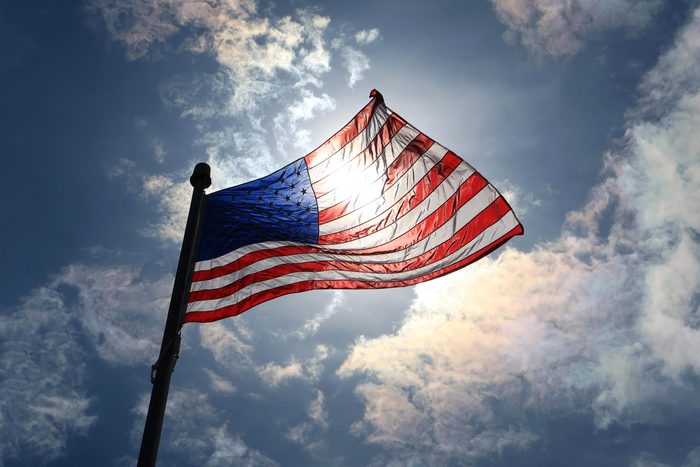
American flag etiquette
The United States flag has served as a symbol of pride and freedom in America since its adoption in 1777. It’s such an iconic symbol (just look at all the American flag pictures out there!) that it even has its own flag etiquette code. Yep, there are certain things that, technically, you can’t do with the American flag.
You know American history, can recite patriotic quotes and always celebrate Memorial Day and the Fourth of July. But do you know what you should (and shouldn’t) do with the flag? If not, this article has you covered.
Read on for flag etiquette mistakes you didn’t realize you were making with Old Glory—and what the official etiquette rules say to do instead.
Get Reader’s Digest’s Read Up newsletter for more knowledge, holiday tips, fun facts, humor, cleaning, travel and tech all week long.

Flag etiquette mistake: You carry the flag horizontally during a parade
It’s tempting to mimic the pregame ceremonies at football games and carry a giant flag horizontally. But the U.S. flag etiquette code is pretty clear on this (and on other American flag facts). The flag should be held “always aloft and free.”

Flag etiquette mistake: You wear the flag as a shirt or swimsuit
The flag’s a flag, not clothing. The etiquette code states that the flag should never be used as apparel, bedding or drapery. So no, wearing a flag is not an ideal way to celebrate Flag Day. But there is an important apparel rule to note about T-shirts emblazoned with the American flag: The nonprofit Independence Hall Association puts them in the same category as wearing the flag, whereas the American Legion says that, because the design is only a “representation,” not the actual flag, there’s no problem with wearing it.
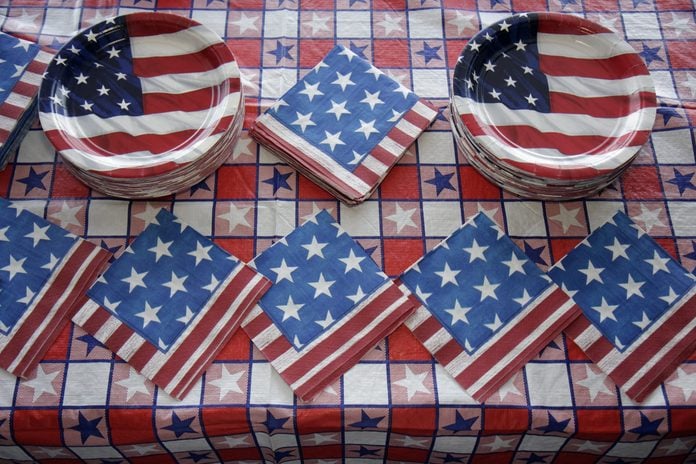
Flag etiquette mistake: You buy American flag napkins for your Fourth of July picnic
It’s Independence Day, so naturally you should celebrate with hamburgers, hot dogs and American flag napkins, right? Not so fast! Consider some other design for wiping up your messes. As with athletic uniforms, the code is very specific when it comes to wiping mustard off your mouth: “[The flag] should not be … printed or otherwise impressed on paper napkins or boxes or anything that is designed for temporary use and discard.”
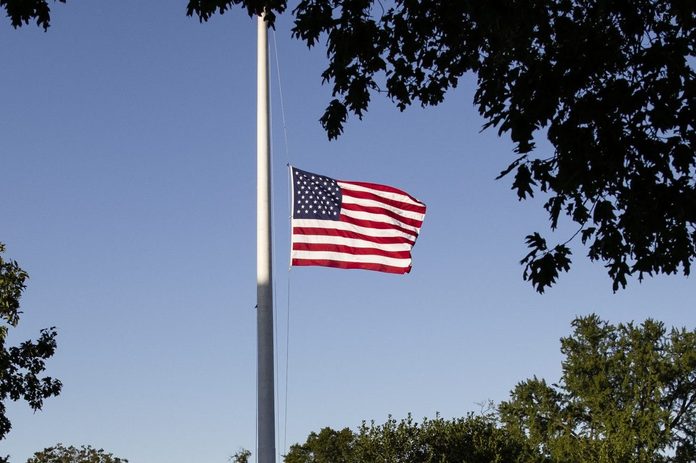
Flag etiquette mistake: You fly the flag at half-staff for a fallen friend
You may be breaking this flag etiquette rule if you’re honoring a fallen soldier or veteran by flying the flag at half-staff. Find another way to honor your friend. According to the flag etiquette code, only the president or your state governor can order the U.S. flag lowered to half-staff.
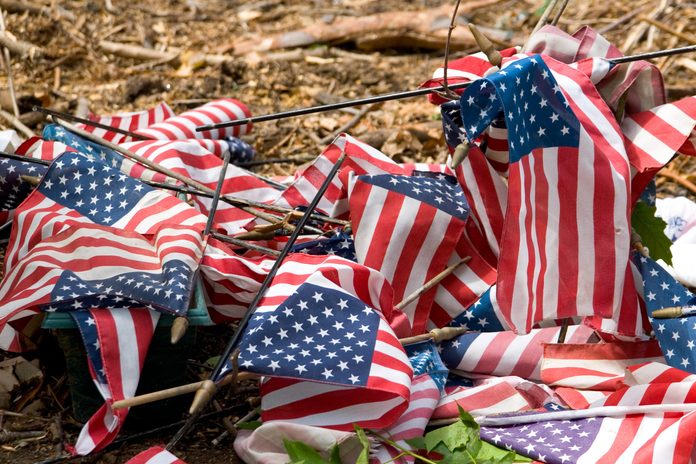
Flag etiquette mistake: You throw away an American flag
If you’re thinking about tossing a tattered American flag in the trash, think again. One of the biggest points to remember about U.S. flag etiquette is that Old Glory doesn’t belong in the garbage. Here’s what the flag code has to say about it: “The flag, when it is in such condition that it is no longer a fitting emblem for display, should be destroyed in a dignified way, preferably by burning.”
The American Legion points out that some American flags may be made from materials that, when burned, can create hazardous gases. It’s even illegal in some states to burn materials like nylon. In that case, the organization says flags made from synthetics may be buried instead of burned.
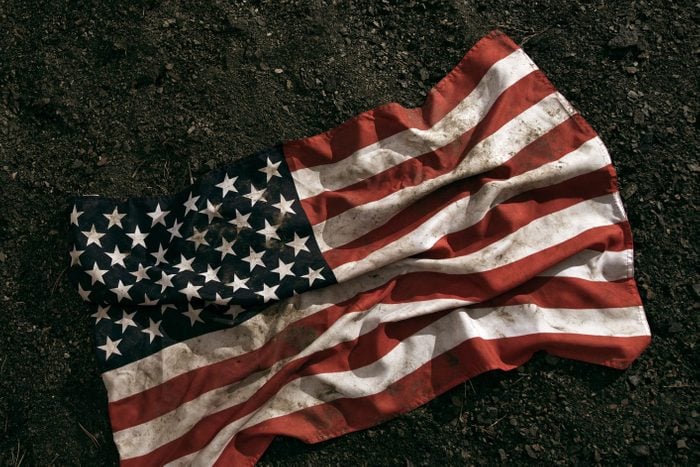
Flag etiquette mistake: You burn a dirtied flag
Your flag has touched the ground—uh-oh! According to the flag code, that’s a no-no. “The flag should never touch anything beneath it, such as the ground, the floor, water or merchandise,” it says.
If the flag is now dirty, you may be tempted to light it up. After all, the etiquette code says that a flag unfit for display should be destroyed by burning. But as noted, that’s not the best idea.
There’s no need to trash a flag that has touched the ground. And if it happens to be dirty? According to the American Legion, you can wash or dry-clean it—just pay attention to the material before you do so.
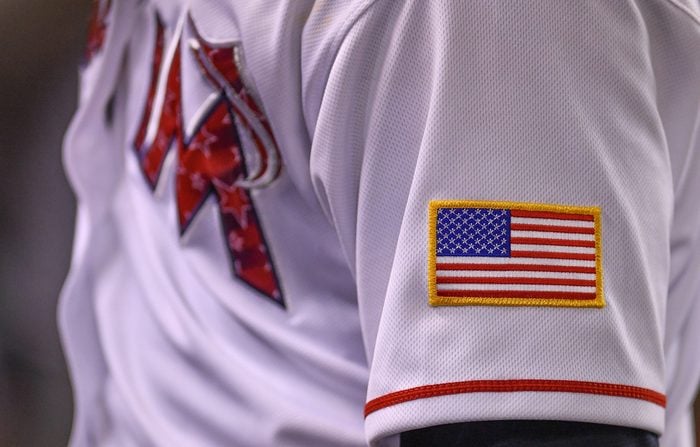
Flag etiquette mistake: You sew an American flag patch onto your sports uniform
There’s nothing more American than baseball. And to reflect that, you’ve sewn an American flag patch onto your baseball uniform. Per U.S. flag etiquette, consider removing it. The flag code actually references this: “No part of the flag should ever be used as a costume or athletic uniform.”
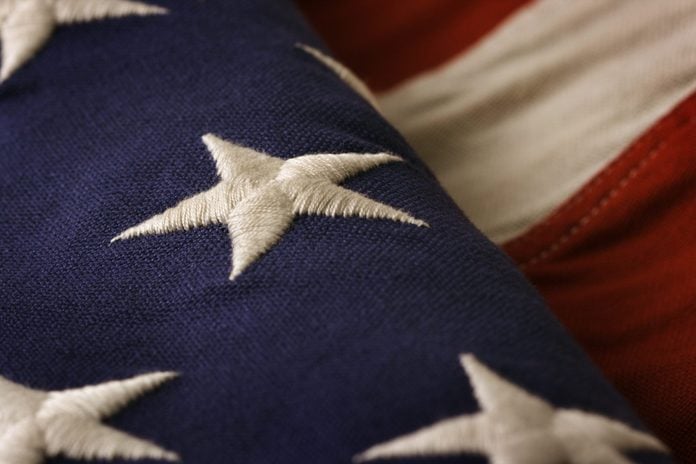
Flag etiquette mistake: You replace the stars with another image
For the same reason as the previous slide, don’t replace the stars with anything else. An image of a favorite candidate, Fourth of July quotes—nothing should replace those symbolic stars.
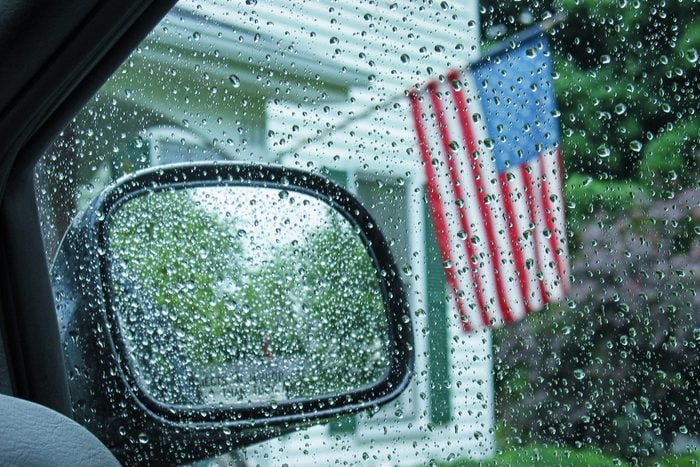
Flag etiquette mistake: You’ve left your flag flying in a rainstorm
Unless you have an all-weather flag, American flag etiquette states it should never be displayed in inclement weather, lest it get ruined.
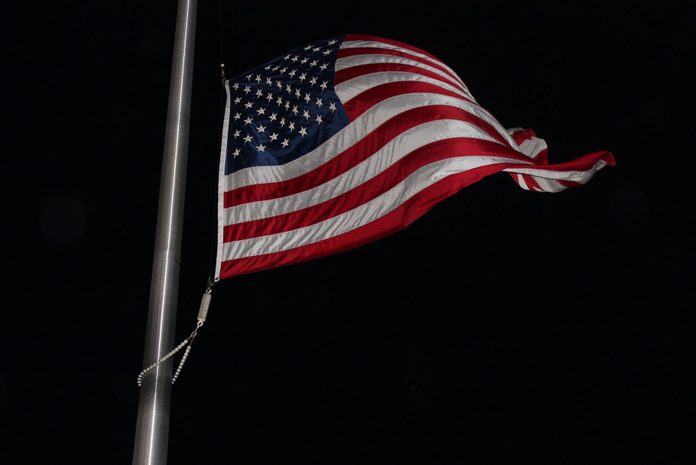
Flag etiquette mistake: You fly the flag at night without proper lighting
If you have an American flag flying in your yard, you may keep it up 24/7. We get it: It’s much easier than taking it down each night and up each morning.
Technically, though, flying the flag after sunset and before sunrise without proper lighting violates the flag code. For flag display etiquette, the code states: “It is the universal custom to display the flag only from sunrise to sunset on buildings and on stationary flagstaffs in the open. However, when a patriotic effect is desired, the flag may be displayed 24 hours a day if properly illuminated during the hours of darkness.”
If you’re flying the flag in your yard, though, it’s understandable if you don’t have professional lighting or don’t want to illuminate your yard when you’re trying to get some shut-eye. Instead, you can put garden lights or other ambient lighting fixtures near the flag so people passing by can properly see Old Glory.

Flag etiquette mistake: You ask a celebrity to sign your flag
It may be tempting to ask a governor, mayor, president or even a famous actor to autograph your flag. But this is a big no-no in flag etiquette. The flag code stipulates, “The flag should never have placed upon it, nor on any part of it, nor attached to it any mark, insignia, letter, word, figure, design, picture or drawing of any nature.”

Flag etiquette mistake: You display another flag and the American flag on the same staff
It’s OK to fly different flags—such as other national or state flags—in addition to, or instead of, the American flag. According to the flag code, however, the American flag must fly on a separate staff. The code also references this: “No other flag or pennant should be placed above or, if on the same level, to the right of the flag of the United States of America.”
Why trust us
At Reader’s Digest, we’re committed to producing high-quality content by writers with expertise and experience in their field in consultation with relevant, qualified experts. We rely on reputable primary sources, including government and professional organizations and academic institutions, as well as our writers’ personal experiences where appropriate. We verify all facts and data, back them with credible sourcing, and revisit them over time to ensure they remain accurate and up to date. Read more about our team, our contributors and our editorial policies.
Sources:
- Cornell Law School, Legal Information Institute: “U.S. Code Title 4—Flag and Seal, Seat of Government, and The States”
- ushistory.org: “Betsy Ross and the American Flag—Flag Code”
- ushistory.org: “Flag Code Frequently Asked Questions”
- American Legion: “Is it permissible to wear an item of clothing that looks like the United States flag?”
- American Legion: “Can the flag be washed or dry-cleaned?”